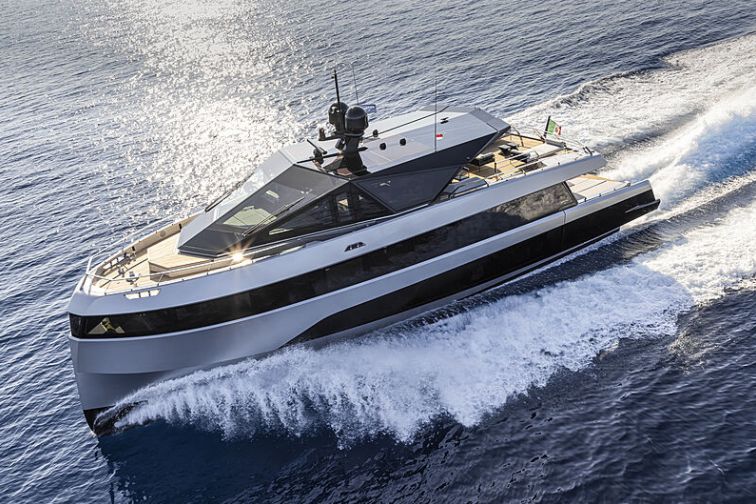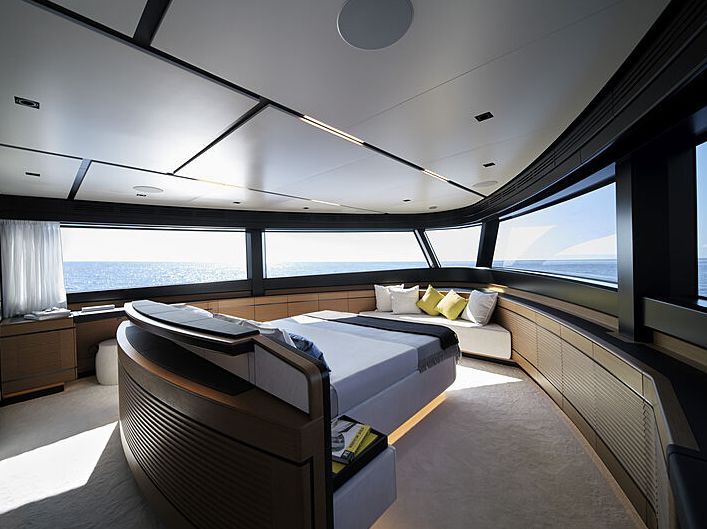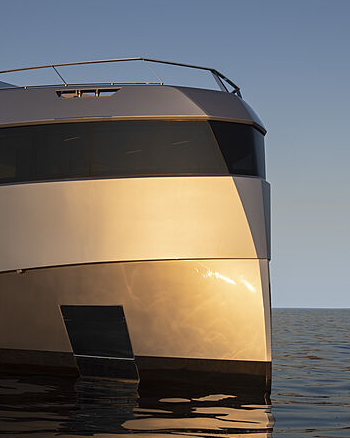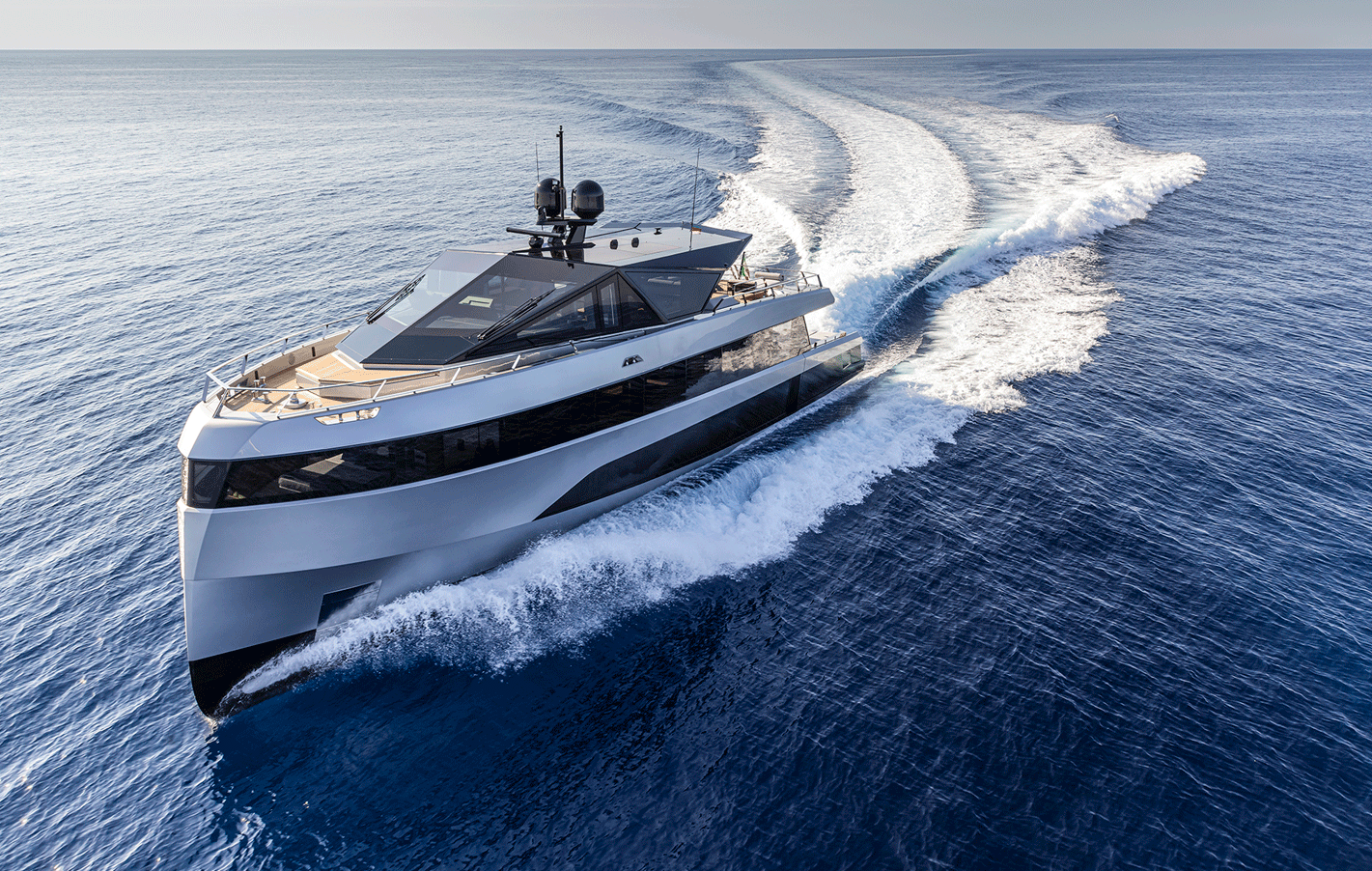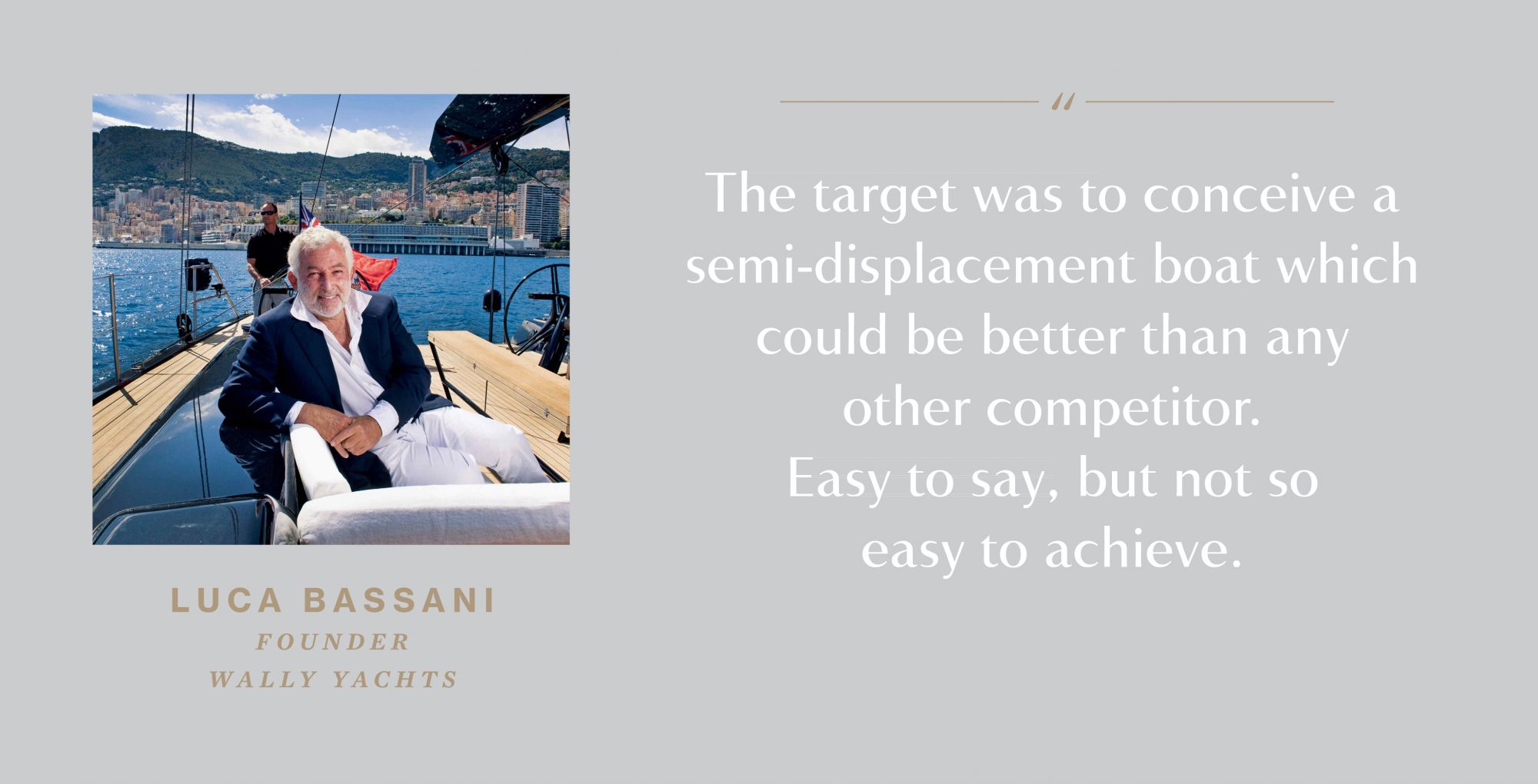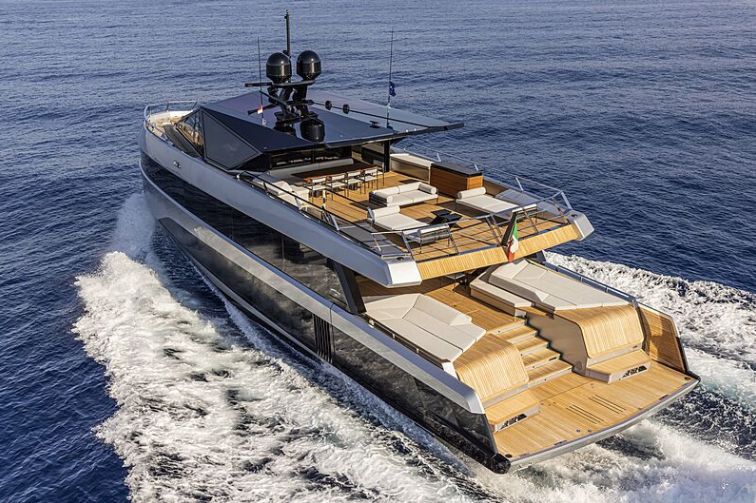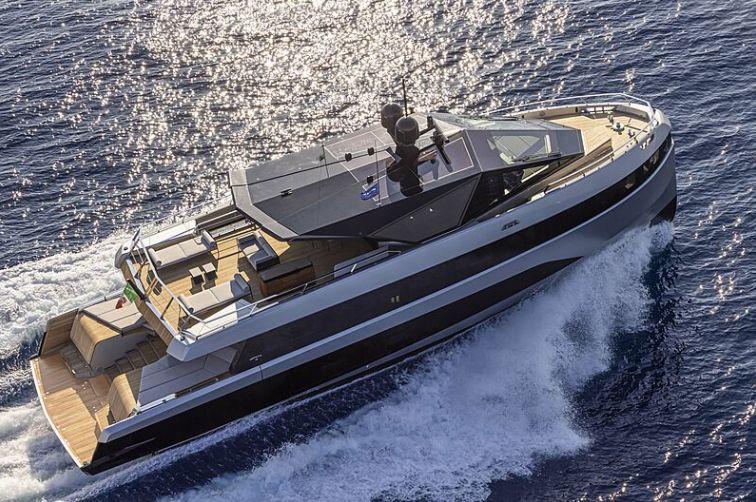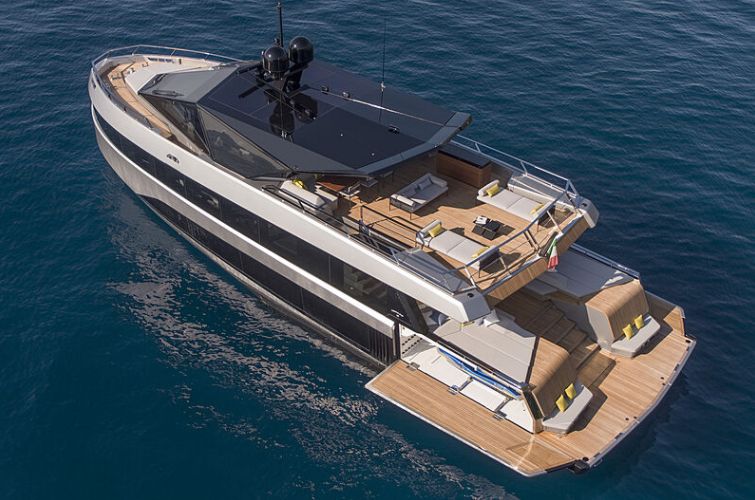“We started thinking about the WHY200 when the management of Ferretti [the Group acquired Wally at the start of 2019] told us they wanted to enter the semi-displacement niche, which was growing quite quickly,” Bassani explains. “They wanted to be there, and to be the best. As usual, we started with the hull because we think that’s the most important component of a yacht as it has to be good in any sea condition – and it was a difficult challenge to have a semi-displacement yacht that could be very seaworthy in bad weather, and comfortable, and at the same time very efficient.”
It was at this point that Bassani and the design team decided a high bow would also be a good design element, not least because when the hull was capable of pushing through the seas at 18 to 20 knots rather than 10 to 12 knots, it was important to have a bow that would stay out of the water and not simply pierce the waves.
“So we designed this very high bow that created a new volume under the foredeck,” Bassani continues, “and having that new volume you say ‘Wow – how could we explore this new volume?’. So the idea was why not try having the master cabin there.”
Usually the bow is subjected to excess vertical accelerations as it pitches in a seaway, but the WHY hull design had mitigated this effect which meant that comfort wouldn’t be an issue. With this location came additional benefits – the distance from the engine room, for example, which means the master suite is completely isolated from engine and generator noise and vibration.
Then, of course, there was the opportunity to do something further – put in a horizontal window that effectively wraps around the stem. “Having a view of the sea is one of the reasons to be on a boat,” Bassani enthuses. “We found it was possible to do that, and the master cabin became the pearl of the whole project.”


